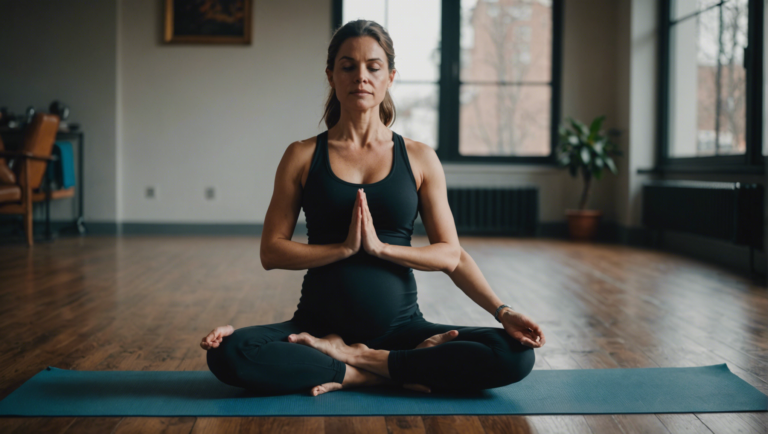Guidelines For Writing An Effective Yoga Nidra Script
The Importance of Crafting a Well-Structured Yoga Nidra Script
Crafting a well-structured Yoga Nidra script is key to delivering a transformative experience for practitioners. Yoga Nidra, also known as yogic sleep, is a powerful meditation technique that induces deep relaxation and offers numerous mental, emotional, and physical benefits. By following specific guidelines and incorporating essential elements into your script, you can create a profound and effective Yoga Nidra practice for yourself and others.
Understanding the Purpose of Yoga Nidra
Yoga Nidra aims to guide practitioners into a state of consciousness between waking and sleeping, where profound relaxation and self-exploration occur. The script should outline clear intentions for the practice, such as relaxation, stress relief, healing, or personal transformation. Understanding the purpose of Yoga Nidra helps in structuring the script to fulfill these intentions effectively.
Setting the Tone and Environment
Begin by setting a calming and safe environment for the practice. Dim the lights, eliminate distractions, and create a comfortable space for practitioners to lie down. Incorporate soothing music or nature sounds to enhance relaxation. The script should include instructions to help practitioners relax their body, focus their mind, and immerse themselves fully in the experience.
Progressive Relaxation Techniques
Incorporate progressive relaxation techniques into your script to help practitioners release tension from each part of the body systematically. Starting from the toes and progressing towards the head, guide participants to relax and let go of any physical or emotional stress they may be holding. This gradual relaxation process deepens the meditative state and promotes overall well-being.
Visualization and Imagery
Utilize the power of visualization and imagery to enhance the Yoga Nidra experience. Guide practitioners to imagine peaceful scenes, sensations of comfort, or symbols representing healing and transformation. Visualizations can evoke powerful emotions and facilitate inner healing, making the practice more impactful and profound.
Sankalpa (Intention Setting)
Integrate Sankalpa, or intention setting, into your Yoga Nidra script to help practitioners align with their deepest desires and aspirations. Encourage participants to plant a positive seed in their subconscious mind by repeating a short, affirmative statement related to their goals or intentions. Sankalpa adds a transformative element to the practice, allowing practitioners to manifest positive changes in their lives.
Clarity, Simplicity, and Repetition
Ensure that your script is clear, simple, and easy to follow. Use concise language and avoid complex instructions that may disrupt the relaxation process. Repetition of key phrases or guidance can deepen the meditative state and reinforce the intended effects of the practice. Keep the script engaging yet straightforward for practitioners to experience profound relaxation.
Crafting a well-structured Yoga Nidra script requires careful planning, creativity, and a deep understanding of the practice’s principles. By following these guidelines and incorporating essential elements into your script, you can create a powerful and transformative experience for yourself and others. Remember that the effectiveness of the practice lies in the delivery of the script, so infuse it with clarity, intention, and compassion to guide practitioners on a journey of profound relaxation and self-discovery.
Understanding the Key Elements of a Successful Yoga Nidra Script
Creating an Effective Yoga Nidra Script
Yoga Nidra, also known as yogic sleep, is a powerful meditation practice that brings about deep relaxation and rejuvenation. When crafting a Yoga Nidra script, it is crucial to consider various elements to ensure its effectiveness. Let’s delve into the key components that contribute to a successful Yoga Nidra script.
Importance of Setting Intentions
Setting clear intentions is fundamental when writing a Yoga Nidra script. Intentions act as the guiding force for the practice, helping practitioners focus their minds and energies. Whether it’s promoting relaxation, reducing stress, or cultivating self-awareness, clearly defined intentions lay the foundation for a transformative experience.
Cultivating a Relaxing Environment
Creating a serene and tranquil environment is essential for a successful Yoga Nidra session. As you craft your script, be mindful of incorporating soothing language, peaceful imagery, and gentle transitions. Guiding practitioners to imagine calming natural settings or peaceful sensations can enhance the overall relaxation response.
Structuring the Script Effectively
A well-structured script can make a significant difference in the efficacy of a Yoga Nidra practice. Begin by guiding practitioners through a body scan to promote physical relaxation. Progressively move towards exploring sensations, emotions, and thoughts while maintaining a sense of inner awareness. Conclude the script by gently bringing practitioners back to a state of wakefulness.
Positive Affirmations
Positive affirmations play a vital role in reinforcing the intended benefits of Yoga Nidra. Infuse the script with uplifting and empowering statements that resonate with practitioners on a subconscious level. Affirmations such as "I am at peace" or "I am worthy of love and happiness" can deeply influence one’s mindset and emotional state.
Embracing Silence and Stillness
Silence and stillness are potent elements of a Yoga Nidra practice. Integrate moments of silence into the script to allow practitioners to deeply absorb the experience without distraction. Encouraging individuals to embrace the stillness within and connect with their inner selves can amplify the transformative effects of the practice.
Guiding the Journey with Mindful Language
Mindful and evocative language is key to guiding practitioners through the Yoga Nidra experience. Choose words that resonate with the subconscious mind, evoke imagery, and elicit feelings of peace and relaxation. By carefully selecting your language, you can create a profound sense of unity between body, mind, and spirit.
Crafting an effective Yoga Nidra script requires attention to detail, compassion, and a deep understanding of the transformative power of meditation. By incorporating these key elements into your script, you can create a profound and enriching experience for practitioners seeking deep relaxation and inner peace.
Tips for Creating a Relaxing and Engaging Yoga Nidra Script
Creating a compelling and effective Yoga Nidra script requires careful consideration and planning. Yoga Nidra, also known as yogic sleep, is a powerful meditation technique that promotes deep relaxation and mindfulness. When writing a Yoga Nidra script, it is essential to focus on creating a space for relaxation, self-discovery, and inner peace. Here are some valuable tips for crafting a yoga nidra script that is both relaxing and engaging:
Understanding the Purpose of Yoga Nidra
Before you start writing your Yoga Nidra script, it’s crucial to understand the purpose of this practice. Yoga Nidra aims to guide practitioners into a state of conscious relaxation where they can access the subconscious mind. The script should help participants experience profound relaxation while remaining alert and aware.
Setting the Tone and Intention
Begin your Yoga Nidra script by setting the tone and intention for the practice. Clearly outline the goals of the session, whether it’s stress relief, deep relaxation, self-exploration, or personal growth. Setting a clear intention helps participants align their mental and emotional energy with the practice.
Creating a Relaxing Atmosphere
When writing a Yoga Nidra script, consider the atmosphere in which the practice will take place. Ensure the environment is conducive to relaxation with dim lighting, comfortable seating or lying positions, and minimal distractions. Incorporate soothing language and gentle cues to guide participants into a state of calm.
Body Awareness and Relaxation Techniques
Body awareness is a fundamental aspect of Yoga Nidra. Guide participants through a body scan, encouraging them to focus on different parts of the body and release tension. Incorporate relaxation techniques such as conscious breathing, progressive muscle relaxation, and visualization to deepen the sense of relaxation and comfort.
Using Positive Affirmations and Visualizations
Positive affirmations can be powerful tools for promoting self-love, confidence, and inner peace. Integrate affirmations that resonate with participants’ goals and aspirations. Additionally, use guided visualizations to stimulate the imagination and evoke emotions that support relaxation and positive transformation.
Maintaining a Slow and Soothing Pace
As you narrate the Yoga Nidra script, maintain a slow and soothing pace. Speak clearly and gently, allowing for moments of silence and stillness. Pace the script in a way that allows participants to absorb the guidance and deepen their relaxation state progressively.
Closing the Practice Mindfully
Towards the end of the Yoga Nidra session, bring participants back to the present moment gradually. Offer gratitude for the practice and encourage practitioners to carry the sense of relaxation and mindfulness into their daily lives. End the script with a calming conclusion that honors the experience.
Creating a captivating Yoga Nidra script involves understanding the purpose of the practice, setting clear intentions, creating a relaxing atmosphere, incorporating body awareness techniques, using positive affirmations and visualizations, maintaining a slow pace, and closing the session mindfully. By following these guidelines, you can craft an effective Yoga Nidra script that promotes deep relaxation and inner peace for participants.
How to Tailor Your Yoga Nidra Script for Different Audiences
Yoga Nidra is a powerful meditation technique that involves guided meditation to help individuals achieve deep relaxation and self-awareness. Tailoring your Yoga Nidra script for different audiences can enhance the effectiveness of the practice and ensure that participants have a meaningful experience. By customizing the script to meet the specific needs and preferences of your audience, you can create a more engaging and impactful session. Here are some guidelines on how to adapt your Yoga Nidra script for different audiences:
Understanding Your Audience
Before crafting your Yoga Nidra script, it is essential to have a clear understanding of your audience. Consider their level of experience with meditation, their preferences, and any specific concerns they may have. Whether you are leading a session for beginners, experienced practitioners, or individuals with specific needs such as stress relief or better sleep, tailoring your script to resonate with your audience is key.
Language and Tone
The language and tone of your Yoga Nidra script play a crucial role in engaging your audience. When working with beginners, it is important to use simple and easy-to-understand language. Avoid complex terminology and metaphors that may alienate or confuse novice practitioners. For experienced yogis, you can incorporate more advanced language and concepts to deepen their practice.
Customizing the Themes
Different audiences may resonate with different themes during a Yoga Nidra session. For beginners, focusing on relaxation, body awareness, and mindfulness can help lay a strong foundation for their practice. Experienced practitioners may benefit from themes like self-discovery, personal growth, or spiritual connection. Adapting the themes of your script to align with the interests and intentions of your audience can foster a deeper sense of connection and resonance.
Inclusion of Affirmations and Visualizations
Integrating affirmations and visualizations into your Yoga Nidra script can enhance the overall experience for your audience. When working with diverse groups, consider including a variety of affirmations that cater to different needs and aspirations. For example, affirmations related to self-love, healing, gratitude, or empowerment can have a profound impact on participants. Similarly, visualizations that appeal to the senses and emotions of your audience can help create a more immersive and transformative experience.
Length and Pace
The length and pace of your Yoga Nidra script can significantly influence the overall experience for your audience. When leading sessions for beginners or individuals with limited attention spans, consider keeping the script concise and focused. For advanced practitioners or those seeking a deeper state of relaxation, you can extend the duration of the script and incorporate longer periods of silence and reflection. Finding the right balance between length and pace will ensure that your audience remains engaged and receptive throughout the session.
Customizing your Yoga Nidra script for different audiences allows you to create a more personalized and impactful meditation experience. By considering the unique needs, preferences, and intentions of your audience, you can tailor your script to resonate with them on a deep level. Remember to stay adaptable and open to feedback, as each audience is unique and may require different approaches to fully benefit from the practice of Yoga Nidra.
Fine-Tuning Your Yoga Nidra Script for Maximum Effectiveness
Yoga Nidra is a powerful technique that allows practitioners to achieve a state of deep relaxation while maintaining full consciousness. Writing an effective Yoga Nidra script requires careful consideration of language, tone, and structure to guide participants through the practice seamlessly. By fine-tuning your script, you can enhance the overall effectiveness of the session and create a profound experience for those engaging in the practice.
Understanding the Purpose of Your Script
Before delving into the writing process, it’s essential to understand the primary goal of your Yoga Nidra script. Are you aiming to promote relaxation, reduce stress, manifest intentions, or explore spirituality? Clearly defining the purpose of the session will guide the language, imagery, and suggestions you incorporate into your script.
Setting the Tone and Language
The tone of your script plays a crucial role in influencing the participant’s experience during Yoga Nidra. Opt for a calm, soothing, and reassuring tone throughout the script to induce a sense of relaxation and security. Use simple and clear language to ensure that participants can easily follow along without feeling overwhelmed by complex instructions.
Creating a Structured Journey
A well-structured Yoga Nidra script follows a journey-like progression, guiding participants through various stages of relaxation and introspection. Start by inviting participants to set a specific intention for the practice, followed by a body scan to promote physical relaxation. Progress to breathing exercises, visualization, and affirmations to deepen the meditative experience.
Sensory Imagery
Sensory imagery plays a significant role in enhancing the effectiveness of a Yoga Nidra session. Engage all senses by incorporating descriptive language that evokes feelings of peace, serenity, and well-being. Encourage participants to visualize calming landscapes, soothing sounds, and pleasant scents to deepen their relaxation response.
Emphasizing Repetition and Affirmations
Repetition is a powerful tool in Yoga Nidra scripts as it reinforces the intended messages and enhances the participant’s receptivity to suggestions. Incorporate positive affirmations that resonate with the individual’s intentions, promoting self-empowerment, healing, and transformation. Repeat these affirmations throughout the script to instill them deeply into the subconscious mind.
Inviting a Smooth Transition
As the Yoga Nidra session nears its conclusion, guide participants through a smooth transition back to wakeful awareness. Gradually bring their attention back to the physical body, surroundings, and present moment. Offer words of gratitude and encouragement, ensuring that participants feel refreshed, rejuvenated, and deeply relaxed as they conclude the practice.
By fine-tuning your Yoga Nidra script with these guidelines in mind, you can create a deeply immersive and transformative experience for practitioners. Remember to personalize your script to cater to the unique needs and intentions of your audience, allowing them to reap the full benefits of this profound relaxation technique.
Conclusion
Crafting a well-structured yoga nidra script is an essential element in guiding practitioners through a transformative experience. By understanding the key elements that contribute to a successful script, such as using clear language, incorporating sensory cues, and maintaining a proper pace, instructors can create a script that resonates deeply with their audience. Additionally, incorporating tips for relaxation and engagement, such as emphasizing breath awareness, body scanning, and visualization techniques, can enhance the overall quality of the yoga nidra experience.
Tailoring a yoga nidra script for different audiences allows instructors to meet the specific needs and preferences of varying practitioners. By considering factors such as age, experience level, and personal goals, instructors can adjust the language, tone, and imagery in their scripts to ensure maximum impact. This personalized approach not only increases accessibility but also fosters a stronger connection between the practitioner and the practice.
Fine-tuning a yoga nidra script for maximum effectiveness involves continuous reflection, evaluation, and refinement. Instructors should pay attention to practitioner feedback, observe the effects of different techniques, and remain open to experimentation and adaptation. By staying attuned to the responses of their audience, instructors can cultivate a dynamic and evolving script that continually enhances the yoga nidra experience.
The art of crafting an effective yoga nidra script lies in the intricate balance of structure, elements, tips, tailoring, and fine-tuning. By recognizing the importance of these aspects and integrating them thoughtfully into their scripts, instructors can create a powerful tool for guiding practitioners on a journey of deep relaxation, self-discovery, and inner transformation. Through dedication, creativity, and a commitment to excellence, instructors can cultivate scripts that not only facilitate profound experiences but also foster a sense of connection, healing, and renewal for all who engage with the practice of yoga nidra.



